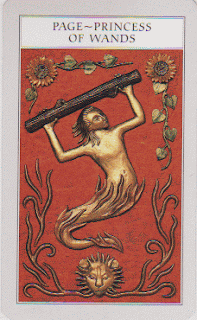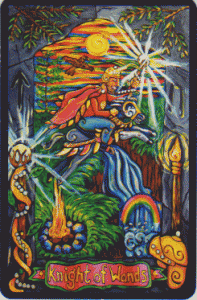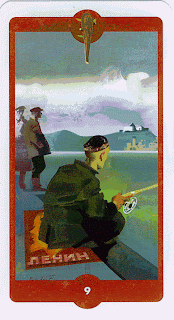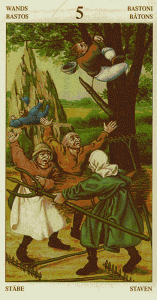I have neither Little White Book nor box for this deck. This deck was originally a display copy in a bookstore that went out of business. A number of the cards have holes in them, as does this one. I guess the holes were to keep people from filching the cards. Now I have a deck with holes.
The only easy thing to say about this deck is that the meanings of its cards have nothing in common with the most modern occult tarot’s most common meanings: those of the Rider-Waite-Smith-type decks. If anything, the upright reading of this card seems like a reversal of the RWS-type:
Upright: Celebration, harmony, marriage, home, community
Reversed: Breakdown in communication, transition
The attitude of these people is like the attitude of people waiting for a train. They are together in the same place, but all their thoughts are elsewhere. They are coming and going; none of them are being here. This group is the opposite of a community. They have no intention of communicating with one another.
I am going to NY City this coming week. How am I getting there? How am I getting back? Where am I going to afterward— Quebec or Vermont? Externally, people traveling generally appear to have a purpose and a destination. Internally, travelers generally feel at least slightly out of place— lightly shaken— loosely scattered—
“In a Station of the Metro”
The apparition of these faces in the crowd;
Petals on a wet, black bough.
—Ezra Pound, 1911





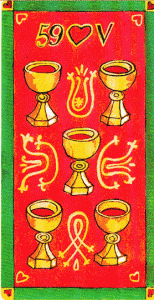

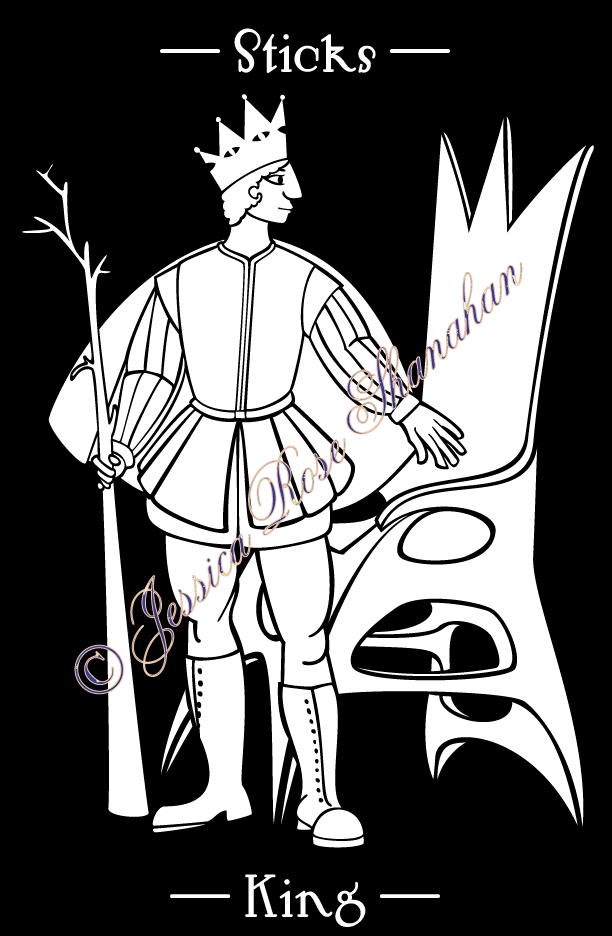 Artist: Jessica Rose Shanahan
Artist: Jessica Rose Shanahan
